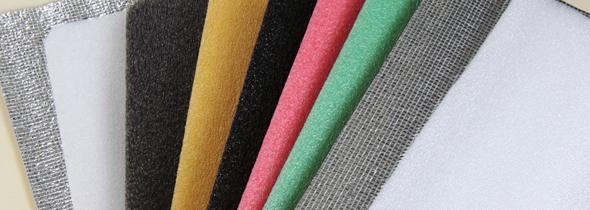
Polyethylene Foam: The Unsung Hero of Modern Industry
admin
- 0
Polyethylene foam is a remarkable material that often goes unnoticed but plays a crucial role in modern industry. Despite its humble appearance, polyethylene foam is a versatile substance with a wide range of applications in various sectors, such as packaging, insulation, and cushioning. Its lightweight nature, durability, and cost-effectiveness make it an indispensable component in today’s manufacturing processes.
When exploring the properties of polyethylene foam, one cannot help but be impressed by its unique characteristics. This foam is exceptionally lightweight, making it easy to work with and transport. Moreover, its excellent shock absorption capabilities ensure that delicate items are well-protected during handling and shipping. Additionally, polyethylene foam is resistant to chemicals, adding to its versatility, and serves as an effective thermal insulator, further enhancing its value in different industries.
In the realm of packaging, polyethylene foam has emerged as a game-changer. Its ability to safeguard fragile items during transit has revolutionized the packaging industry. By providing a cushioning layer that absorbs shocks and vibrations, polyethylene foam minimizes the risk of damage, ensuring that products reach their destination intact. This not only enhances the safety of goods but also reduces the financial losses associated with damaged merchandise.

polyethylene foam : https://www.durfoam.com/en/durpack/3/3/5
pe foam : https://www.durfoam.com/en/durpack/3/3/5
physically cross linked polyethylene foam : https://www.durfoam.com/en/durprox/1/3/5
As the world increasingly focuses on environmental sustainability, the impact of materials like polyethylene foam comes under scrutiny. Understanding the environmental considerations surrounding its production is crucial. Efforts to promote sustainability in the foam manufacturing industry are underway, including exploring recycling options to minimize waste and reduce the ecological footprint of foam production.
Properties of Polyethylene Foam
Table of Contents
TogglePolyethylene foam is a remarkable material with a wide range of properties that make it indispensable in various industries. Let’s delve into the unique characteristics that set polyethylene foam apart from other materials:
- Lightweight Structure: One of the key features of polyethylene foam is its incredibly light weight, making it easy to handle and transport, reducing overall shipping costs.
- Excellent Shock Absorption: This foam excels at cushioning and absorbing impact, providing superior protection to delicate items during transit or storage.
- Resistance to Chemicals: Polyethylene foam is resistant to many chemicals, ensuring that it maintains its structural integrity even in harsh environments.
- Thermal Insulation Properties: Its thermal insulation capabilities make polyethylene foam a popular choice for applications where temperature control is crucial.

When it comes to versatility and performance, polyethylene foam stands out as a reliable and efficient material that meets the diverse needs of modern industry. Its ability to combine strength, flexibility, and durability makes it an unsung hero in the manufacturing world.
Applications in Packaging
When it comes to the applications of polyethylene foam, the packaging industry stands out as a primary beneficiary of this versatile material. Polyethylene foam has revolutionized packaging practices by providing unmatched protection to fragile items during shipping and handling. Its lightweight nature combined with excellent shock absorption capabilities make it an ideal choice for safeguarding delicate products on their journey from manufacturer to consumer.
One of the key advantages of polyethylene foam in packaging is its ability to conform to the shape of the item it is protecting, creating a custom-fit cushioning that minimizes movement and reduces the risk of damage. This tailored approach ensures that even the most delicate objects remain secure and intact throughout the transportation process. Additionally, the durability of polyethylene foam allows for repeated use, making it a sustainable option for packaging solutions.

Furthermore, polyethylene foam’s resistance to chemicals adds another layer of protection, safeguarding packaged goods from potential contamination or damage caused by exposure to harmful substances. This feature is especially crucial for industries that deal with hazardous materials or sensitive products that require a high level of care during transit.
In addition to its protective qualities, polyethylene foam also contributes to the overall sustainability of the packaging industry. Its recyclable nature enables companies to minimize waste and reduce their environmental impact by incorporating recycled foam into new packaging materials. By promoting the use of recycled polyethylene foam, manufacturers can take significant steps towards achieving a more eco-friendly and sustainable packaging process.
Environmental Impact and Sustainability
When it comes to the environmental impact and sustainability of polyethylene foam, there are important considerations to take into account. While polyethylene foam offers numerous benefits in terms of packaging and insulation, its production process raises concerns about its environmental footprint.
One of the primary environmental issues associated with polyethylene foam is its non-biodegradable nature. Due to its synthetic composition, polyethylene foam does not easily break down in the environment, leading to long-term pollution concerns. This aspect highlights the importance of exploring recycling options to minimize the accumulation of foam waste in landfills and natural habitats.
In response to these environmental challenges, the foam manufacturing industry is increasingly focusing on sustainability initiatives. Companies are investing in research and development to create eco-friendly alternatives to traditional polyethylene foam, aiming to reduce the material’s impact on the environment.
Furthermore, efforts are being made to promote the recycling of polyethylene foam to extend its lifecycle and reduce the need for virgin materials. By implementing efficient recycling programs and raising awareness about the benefits of recycling foam products, the industry is striving to minimize waste and contribute to a more sustainable future.
Overall, while polyethylene foam offers valuable properties for various industries, it is essential to address its environmental implications and work towards sustainable practices. By prioritizing recycling, exploring eco-friendly alternatives, and promoting environmental awareness, the foam industry can play a significant role in reducing its impact on the planet and fostering a more sustainable manufacturing landscape.

